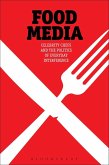The chapters in this volume concentrate on the mundane and ordinary eating practices of the everyday, showing how these are linked to change in modern society. The contributors present a collection of systematic empirical results from a unique study based on representative samples of four Nordic populations - Denmark, Finland, Norway and Sweden - conducted at two time points, 15 years apart. The results of this unprecedented longitudinal survey leads the contributors to question many commonly held beliefs about the presumed and feared collapse of the traditional eating habits, family meals, and regular meal patterns.
As the social organization of eating is in many ways related to developments in other social institutions such as family, education, and work, chapters provide interesting insights into contemporary society, with key topics selected for scrutiny including gender, food types, diet and health, and cooking practices. Additionally, the chapters highlight changes in the gendering of food practices and signs of increasing informality around meals.
As the social organization of eating is in many ways related to developments in other social institutions such as family, education, and work, chapters provide interesting insights into contemporary society, with key topics selected for scrutiny including gender, food types, diet and health, and cooking practices. Additionally, the chapters highlight changes in the gendering of food practices and signs of increasing informality around meals.









